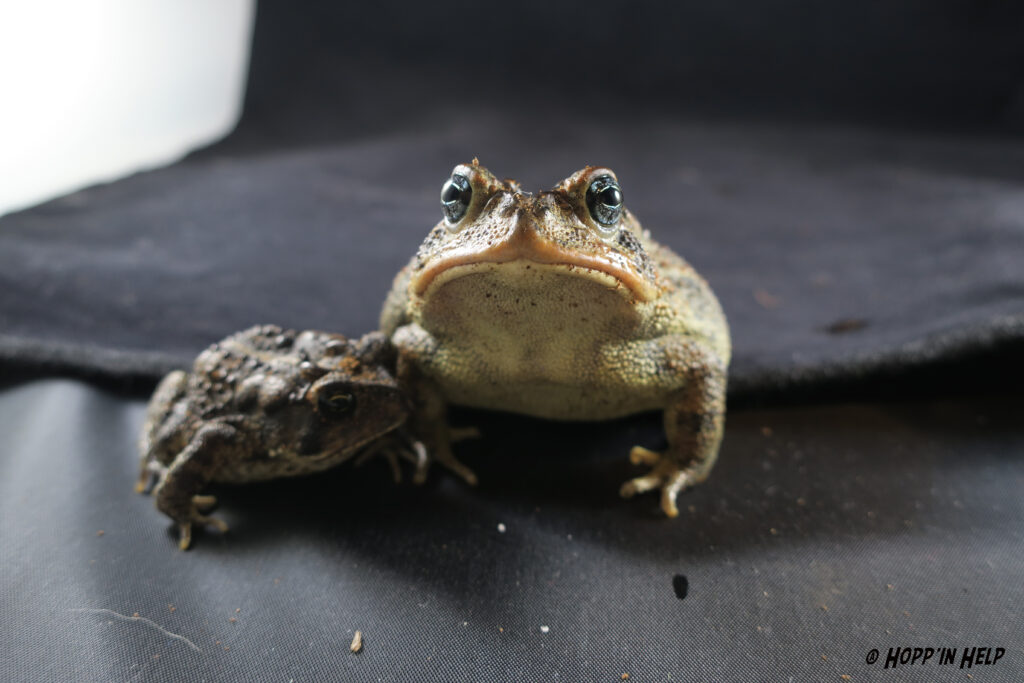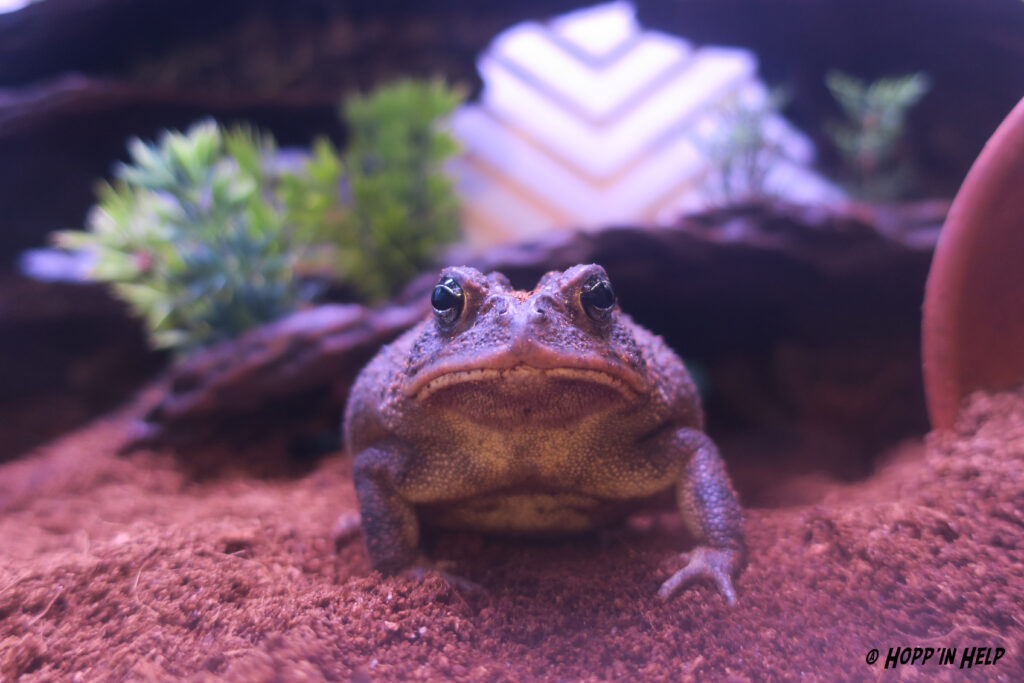SOUTHERN TOAD CARE SHEET Anaxyrus terrestris

PERSONAL EXPERIENCE: Southern Toads are like a bouquet of toads! Ranging in stunning colors of dark brown to vibrant red. A common backyard friend to those of southeastern United States. From wild to captive toads, you can win them over with food. I have found these toads to make great garden friends and indoor captive bred pets.
CAPTIVITY DIFFICULTY: Beginner
LIFE SPAN: 10-12 years
ACTIVITY: Southern Toads are predominately nocturnal, while sometimes being active at dusk. During the day Southern Toads spend their time resting in burrows and under brush. At dusk, these toads emerge from their craters to explore, soak, and hunt.
ENCLOSURE: Southern Toads require a large amount of loose soft substrate for proper burrowing. 6-8 inches (15-20cm) is recommended, if not more. Toads greatly enjoy burrowing into the roots of live plants. While this may damage the plant, it is great enrichment for captive toads. I have had good experiences with Parlor Palms, Alligators Ferns, and White Jewel Dracaenas. The hardiest plant has always been the pothos. For a step by step guide to preparing plants for your enclosure, click the button below.

Multiple hiding place are needed. From logs, aquarium décor, wooden hides, and any structure that “hides” your toad on three sides. A minimum of 2-3 hides are ideal to give your toad a variety of places to rest in. A large water bowl is needed to allow proper hydration. Southern Toads can be quite clumsy so having a bowl with a ramp in and out has worked best in my experince. Exo Terra and Zoo Med provide a variety of selections with ramps. Clean, freshwater must always be available. This may require changing of the water daily. If using tap water, water conditioner must be used. This removes harmful chemicals and makes the water safe for your amphibian. Directions vary so be sure to read the label before using.
SIZE OF ENCLOSURE: A minimum of a 20-gallon terrarium for two Southern Toads, but larger is recommended. I have found having a front opening enclosure to be beneficial in limiting stress of the toad when maintaining the enclosure. As prey animals, toads may be startled when reaching over the tops of their heads.

HUMIDITY: 60-70%
TEMPERATURE: Daytime temperatures of 72-80 degrees F (22-27 C) are ideal. A basking light is not needed. Southern Toads thrive at room temperature.
Nighttime temperatures should never drop below 60 degrees F (15 C), and should typically stay above 65 degrees F (18 C). A low watt heat emitter, scheduled for the times the temperature drops too low. Excess heat leads to the drying out of the enclosure and can be deadly to amphibians!
LIGHTING: UVB light is recommended but not a necessity. A linear 2.0 UVB is best, more intense UVB may burn your toads sensitive skin.

FEEDING: Live crickets or dubia roaches should be their main diet. An adult Southern Toad should have 10-12 crickets/dubias every 2-3 days. Each meal should be dusted with supplements. Mealworms, Wax worms, Red Wigglers, moths, and Phoenix worms can be given as snacks occasionally. A diverse diet improves your toads’ health.
What size crickets or dubias do I get for my Southern Toad? A general rule for feeding Reptiles and Amphibians is, the food in question’s girth should fit in between the animal’s eyes. Southern Toads do well with ½ inch crickets and dubia roaches.
SUPPLEMENTS: A vital aspect of maintaining your amphibian’s health in captivity is supplementing their diet with powdered vitamins and minerals. Meeting proper habitat requirements alone will not provide essential nutrients for them to thrive.
Powdered supplements should be dusted onto your amphibian’s meal at every feeding. Calcium is the most important nutrient amphibians receive primarily from the supplements you place on their food. It helps ensure proper bone growth and density, muscle and nerve function, and overall metabolic function. Herptiles without proper calcium levels can develop nutritional secondary hyperparathyroidism (NSHP) or more commonly known as metabolic bone disease (MBD). NSHP is a specific kind of MBD commonly seen in captive reptiles and amphibians. Here the parathyroid glands overcompensate for the lack of calcium, ultimately resulting in bone weakening as the body essentially “steals” calcium from the bones.
Thankfully with a proper diet, NSHP can be avoided altogether. Powdered Calcium supplements are commonly sold in two forms, with D3 and without D3. Amphibians kept with UVB should be given calcium without D3 to avoid possible overdosing of the vitamin. Research has found that naturally produced D3 in the body is safer and more effective than orally supplemented D3. However, for the reasons listed in the “lighting” section, amphibian owners have the best success with oral supplements with products available currently.
In addition to calcium with D3; vitamin A, and multivitamins should be given periodically.

HOW TO SEX: Males tend to be smaller and have dark colored throats. This is where their throat expands when producing a mating call. Only Males produce this high pitch trill.
Females tend to be large than males and do not produce any vocalizations other than a small chirp if startled.
SIZE: The typical length for an adult Southern Toad is 1-3.5 inches (2.5-9cm) but depends on sex as stated above.
I AM NEW TO FROGS, ARE THEY GOOD FOR BEGINNERS?
Southern Toads are wonderful for beginners! In terms of care, they are extremely easy to keep but they are not the best option if you are looking to handle often.
